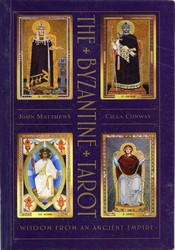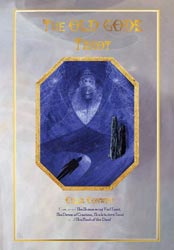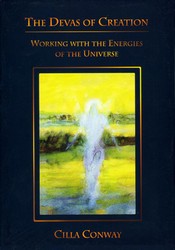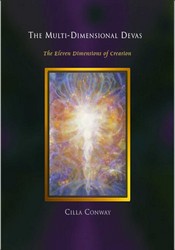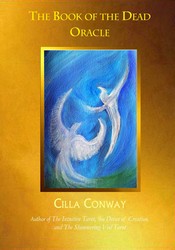Cilla Conway
The Byzantine Tarot
The Byzantine Tarot is a collaboration between John Matthews and myself. It happened, as so many of my decks, more or less by ‘accident’. I had gone to the launch of one of John’s decks and while we were chatting, I told him about a wonderful postcard from St Catherine’s Monastery in Sinai. to someone at Watkins (I worked there as a reader for many years). It was actually of John the Baptist, but I had immediately seen it as the Tarot Hermit, and set me thinking about a Byzantine tarot deck.
Coincidentally, John had also been wondering about a Byzantine Tarot. His idea was to concentrate on the wonderful costumes and hierarchy at the Byzantine court. We decided it might be a useful collaboration, and so it proved.
Given my connection with the Tarot Fool (see my Intuitive Tarot – link), I decided to research the Holy Fool, and to my surprise there was a huge amount of information, not only on Byzantine Holy Fools, but also Russian (Christianity was introduced into Kyivan Rus by Greek missionaries from Byzantium in the 9th century). The Holy Fool was something of a feature of Byzantine life: men and women both often felt called to live this harsh life of penury and extreme religiosity. Divesting themselves of clothing and food, they would live on scraps but would often invade towns to exhort the populace to live less sinful lives. Some took extreme measures to show their holiness– one man (who later becamse a saint) built a pedestal which gradually grew higher and higher, and stayed there many years (I eventually illustrated him in The Tower, see below). The more I researched, the more I saw how the Byzantine way of life would be perfect for a tarot deck.
The Major Arcana

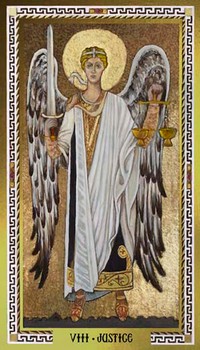


I chose to work only a little larger than finished size. Painting in egg tempera, I often had to use a size 000 paintbrush and magnifying glass for the details.
I also went to Istanbul two or three times to look at Byzantine frescos and mosaics. On one of my visits, I was fortunate enough to find an astonishing little museum, the Chora basilica, which not only still featured all the original frescoes and mosaics, but had also published them in a reference book. This enabled me to produce ideas direct from original Byzantine imagery for both Major and Minor arcana.
I was really impressed that many of the original frescos and mosaics had somehow been preserved – when they had taken over the city, the Ottoman Turks had plastered over, but not destroyed many, and were now cleaning them for tourists. Ironically, the Crusaders (ostensibly Christians) had sacked Constantinople in 1204 and had probably done a lot more damage then, than the Turks had done three hundred years later. Even worse, the Byzantines themselves had destroyed many ancient, irreplaceable icons in their earlier fanatic iconoclasm.
The Minor Arcana
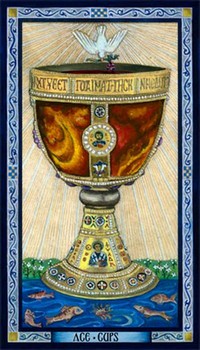
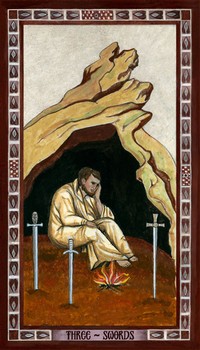
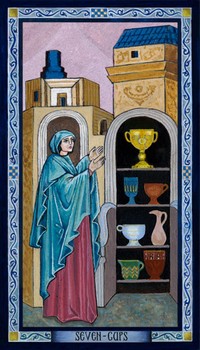
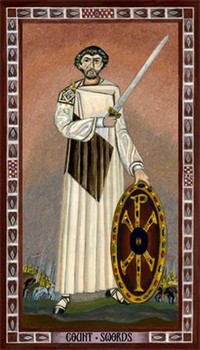

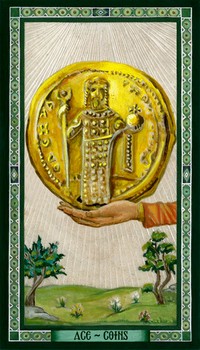
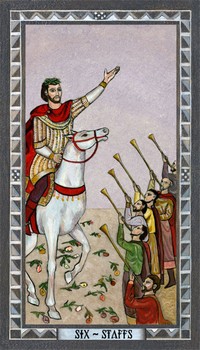
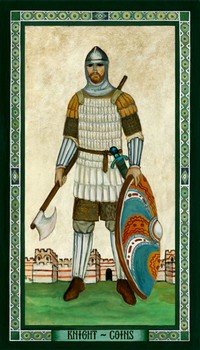
The Minor Arcana in The Byzantine Tarot follow the RWS pattern, but reference Byzantine art as far as possible. A few utilise actual portraits – for instance, the Three of Coins above shows the architects of Santa Sophia, and Emperor Justinian who commissioned the basilica. The Count of Swords was a General Belisarius whose career lasted over thirty years in the army, and included Justinian’s decision to conquer the Roman western Empire.
The Ace of Cups is a spectacular goblet made of sardonyx in the 10th Century for the Theophylact or patriarchs. It is now to be found in The Treasury of St Mark’s Basilica, Venice – as with so much of Byzantium’s superb craftsmanship (the famous horses that stand above the St Mark’s Basilica were also looted by the Fourth Crusaders from the Hippodrome in Byzantium). It is hardly surprising that the Saracens and Turks considered the Crusaders barbarians.
The Byzantine Empire was formed in 324 when Constantine I transferred the capital from Rome to Byzantium (the city became known as Constantinople). Under Theodosius I Christianity became the Empire’s official state religion, and the Empire lasted until 1453, when the Ottoman Turks overran the city.

This deck was published in 2014 by Connections Publishing, and reprinted in 2021 by Red Feather (US).
Video Reviews
This deck has been very well received by the public, and here are a few video reviews for you to see for yourself.
What Customers Are Saying
“It is the colors, their juxtaposition, how they take form, and of course the luminosity. I found more than my eyes involved. There were sounds and sensations, movement – all difficult to describe.”
Raphael, New York, USA – 2019
“IIt is the colors, their juxtaposition, how they take form, and of course the luminosity. I found more than my eyes involved. There were sounds and sensations, movement – all difficult to describe.”
Raphael, New York, USA – 2019

